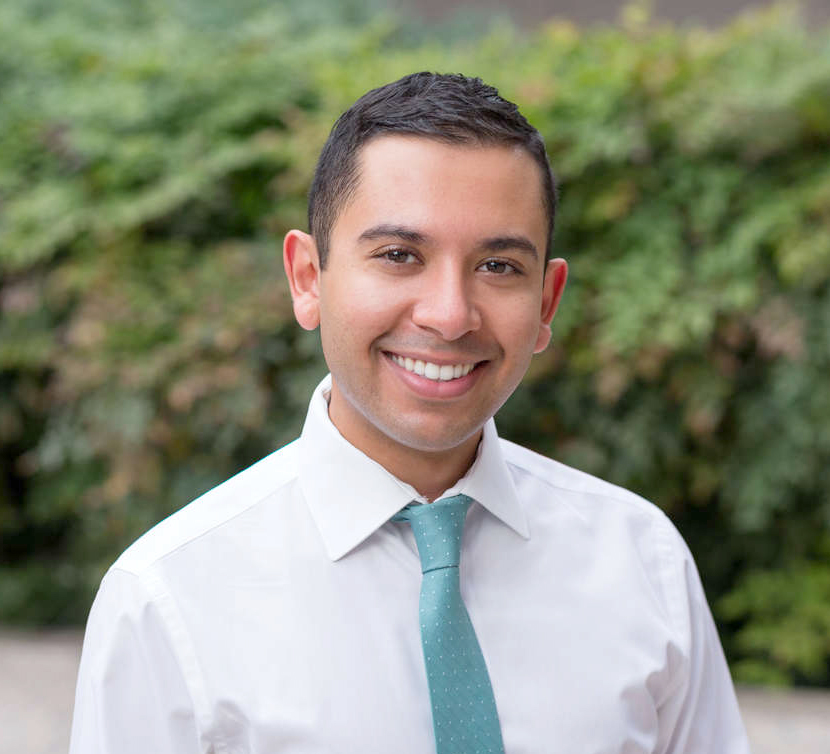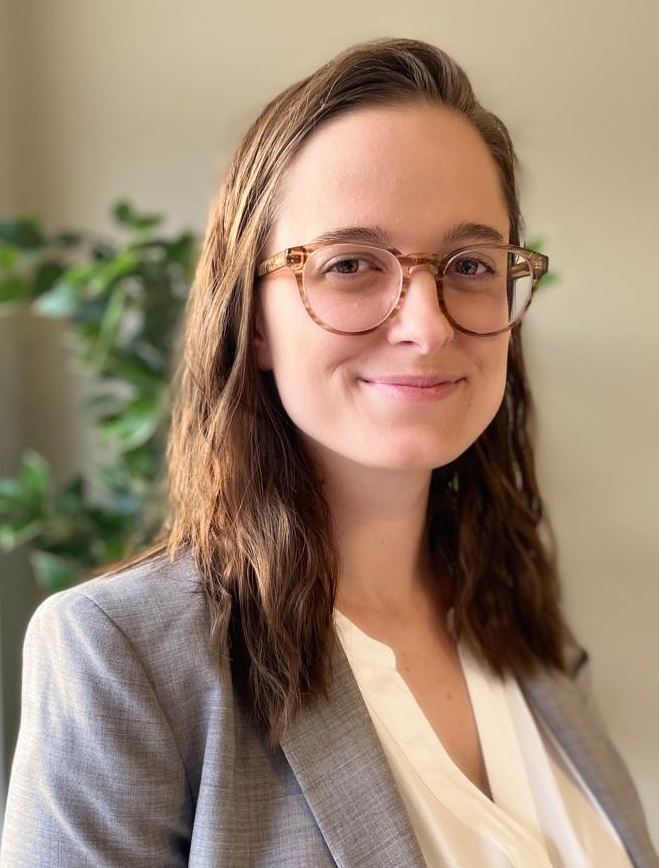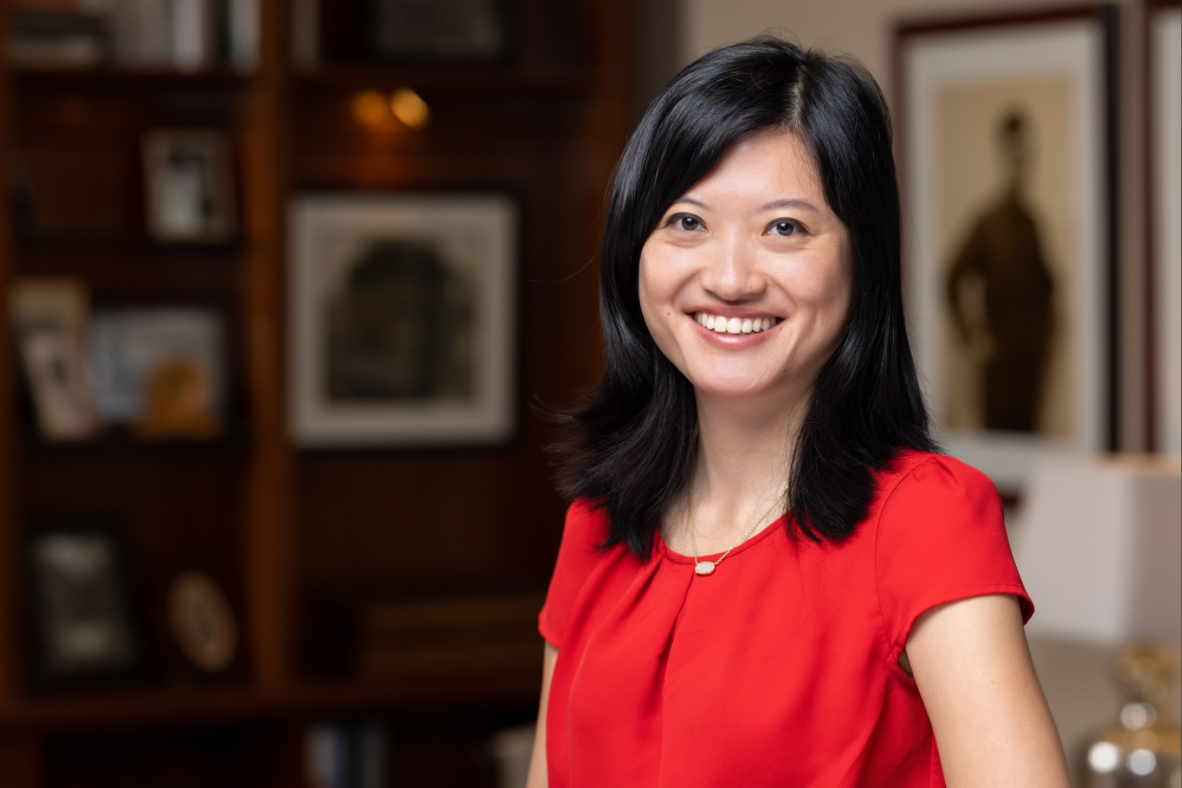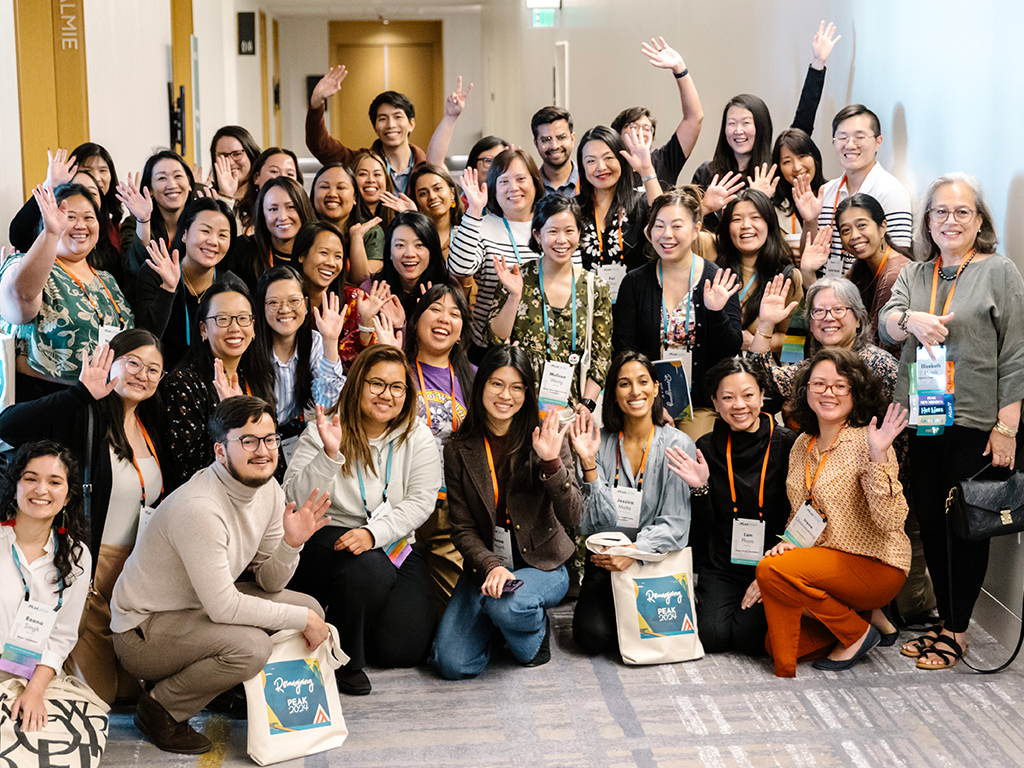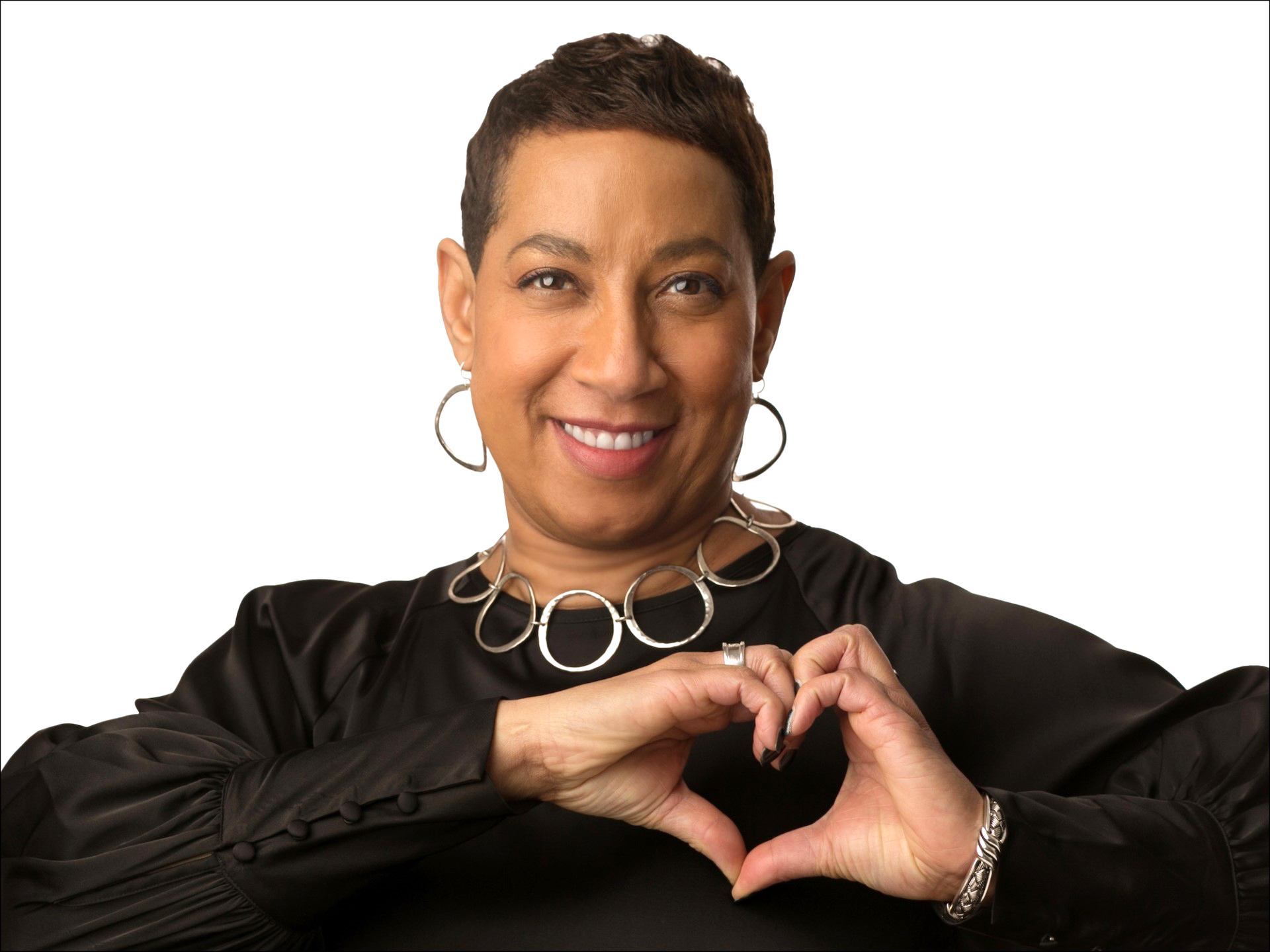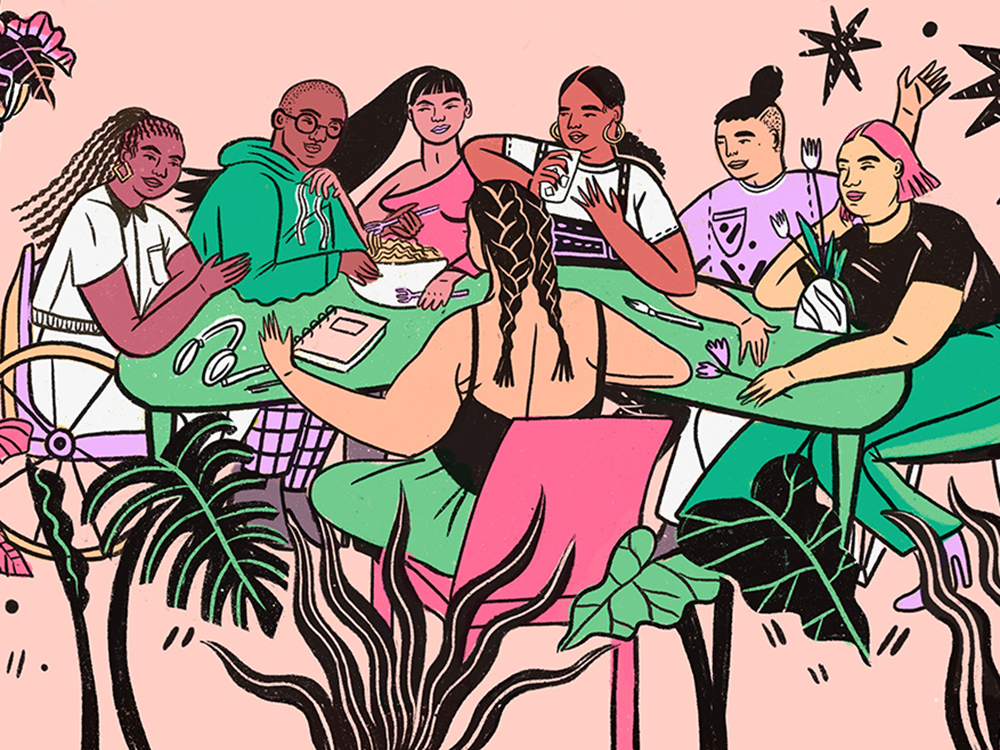
Allyship is more than empathy. Allyship means seeing and leveraging the privilege you possess to be an active stakeholder in the interests of those with less privilege and a committed partner in changing the systems that diminish them. It means being self-aware, courageous, and committed to championing others. Conceptually, this might seem overwhelmingly complicated, but there are many simple things you can do to be a true ally.
To help our members think about how they can champion a culture of allyship inside their organizations, we invited several PEAK members, partners, and friends to share their thoughts: Jaser Alsharhan, director of programs, Grantmakers for Effective Organizations; Kelsey Andersen, assistant vice president, grants associate, Citi Community Investing and Development, Citi Foundation; Richael Faithful, a healing justice practitioner; Rachel Gonzales, program director, Animal Assistance Foundation; Jody Marshall, housing opportunities program associate, Meyer Memorial Trust; and Jenny Zhang Morgan, grants officer, Robert W. Woodruff Foundation.
Self-reflection is an important component of allyship, but we’ve observed some funders using it as a cop-out to not take urgent action. As Vu Le once said, “The road to hell is paved with book clubs.” What are your recommendations to funders starting on this journey?
Marshall: Philanthropy is not just about grantmaking. Consider what other actions you can take that use your organization’s positional power to leverage other resources. At Meyer, we’ve released op-eds and articles. We came out with a statement for George Floyd, like many other organizations, but we’ve backed it up with a $25 million initiative, Justice Oregon for Black Lives. It is just now funding its first $5 million in the community. This was the first time where we went out to the community and asked specific questions about what they wanted us to do with it.
Morgan: Not every foundation is ready to stake a multi-million-dollar commitment to racial equity when they don’t know what will be funded. Examine your mission and values. Does equity fit? If it does, can you implement it in a way that honors your ethos, legacy and style? And while you know best how to effect change in your organization, have the humility to admit what you don’t know and look for help outside your walls. Carry as much patience and grace as you can for the journey. No one has arrived at equity nirvana, so we need to see each other’s humanity and meet people where they are if we want to build the common ground we need for lasting change.
 Alsharhan: I recommend that funders live in the space of experimentation and exploration as a daily norm. Funders should work in concert with grantees and community members on testing out new approaches and iterate on those new approaches with feedback from those most impacted by the work. Ask, “Do you want us to play the role of an ally? What would that look like for you?” If an approach is not working—and you know that truth from those most impacted—you can move on to the next experiment.
Alsharhan: I recommend that funders live in the space of experimentation and exploration as a daily norm. Funders should work in concert with grantees and community members on testing out new approaches and iterate on those new approaches with feedback from those most impacted by the work. Ask, “Do you want us to play the role of an ally? What would that look like for you?” If an approach is not working—and you know that truth from those most impacted—you can move on to the next experiment.
Faithful: Self reflection, study, and action are not in tension with one another—self reflection and study must serve as anchors to your action. They inform action so that it is more powerful. It is helpful to view self reflection, study, and action as complete parts of allyship because they are needed to be a reliable ally. Many Black people, especially those who struggle for racial justice, have been negatively impacted by allies who didn’t have enough information or acted too fast. On one side, Black justice workers are put at risk by allies who take urgent action without a clear sense of their position or context, especially in high-stake moments. On the other side, they are made vulnerable if they are relying on action, and allies’ paralysis render them unable to act, especially when their action is needed most. Perhaps right now, our most critical discernment is knowing when to be still, and when to move. Regardless, allies will still need to understand the moment we are in, and who they are, to be effective.
 Gonzales: Any funder that wants to embark on the journey of allyship needs to be prepared to be uncomfortable and educate themselves on systems of oppression. For leaders, this requires surrendering all preconceived notions they have about your organization, themselves, and others.
Gonzales: Any funder that wants to embark on the journey of allyship needs to be prepared to be uncomfortable and educate themselves on systems of oppression. For leaders, this requires surrendering all preconceived notions they have about your organization, themselves, and others.
This will ultimately allow for greater learning, understanding, and resistance to oppressive structures. Many funders also need to build capacity to accept criticism and the gift it offers to do and be better. Being a performative ally helps no one and leads to perpetuating oppression.
Every well-meaning organization thinks they are doing it right and that they could not possibly be doing anything to harm the marginalized communities they seek to serve. Injustice and inequity can be insidious and show up in ways you haven’t imagined or even realized. Approaching this work from a place of surrender and genuine empathy will help build trust and will allow you to use the power and privilege you possess for good.
Andersen: Starting anything can seem daunting, especially if you don’t know where to start. My advice to funders starting on this journey is to seek out knowledge and partnerships. One of the best ways to do this is to reach out to your colleagues in the philanthropic community who are doing this work. That could mean starting a discussion thread in CONNECT to ask for advice or being proactive and engaging with resources organizations like PEAK have available, such as chapter meetings or affinity groups. Taking the time to prioritize this journey is key, as is a commitment to transparency and growth.
How can you build a culture of equity and allyship from wherever you sit within an organization?
 Faithful: Allyship is so powerful because it does not depend on those with institutional power, and, in fact, allyship assumes that power is contested and is an effort to build power through association. Therefore, allyship must be present in as many places as possible. It is critical for every person to identify and leverage the power that is available through your identity, in your position, with the everyday self-determination that you are afforded. These micro-contributions, along with the work of modeling allyship, reshapes culture and powers our collective self-determination to change. When strong allyship is practiced in little ways, we shift. So it is important we value what we can do, and do it.
Faithful: Allyship is so powerful because it does not depend on those with institutional power, and, in fact, allyship assumes that power is contested and is an effort to build power through association. Therefore, allyship must be present in as many places as possible. It is critical for every person to identify and leverage the power that is available through your identity, in your position, with the everyday self-determination that you are afforded. These micro-contributions, along with the work of modeling allyship, reshapes culture and powers our collective self-determination to change. When strong allyship is practiced in little ways, we shift. So it is important we value what we can do, and do it.
Marshall: Peer-to-peer relationships and learning spaces are where I find my support. So for those who are isolated in their positions, create that time to talk to other folks to know that you’re not alone and get different ideas.
 Andersen: Driving a more equitable culture is a journey that requires openness and self-reflection, as well as a willingness to learn and take action both individually and collectively. Start by making a commitment to yourself and to your colleagues. Offer to set up a space where your colleagues can meet and discuss their thoughts and ideas, or set up an anonymous survey to ensure all voices are included in the process of gathering thoughts and implementing changes. Acknowledge if you are in a privileged position and need to get comfortable with being uncomfortable to learn and grow. Pay attention to the language you use and encourage participation in meetings from those who are not normally given a chance to use their voice. Set up informal check-ins to keep you and your colleagues accountable. Accountability is key to success.
Andersen: Driving a more equitable culture is a journey that requires openness and self-reflection, as well as a willingness to learn and take action both individually and collectively. Start by making a commitment to yourself and to your colleagues. Offer to set up a space where your colleagues can meet and discuss their thoughts and ideas, or set up an anonymous survey to ensure all voices are included in the process of gathering thoughts and implementing changes. Acknowledge if you are in a privileged position and need to get comfortable with being uncomfortable to learn and grow. Pay attention to the language you use and encourage participation in meetings from those who are not normally given a chance to use their voice. Set up informal check-ins to keep you and your colleagues accountable. Accountability is key to success.
Gonzales: Develop an awareness of where unconscious bias occurs and provide teams with the tools to manage bias and create more inclusivity. Create a culture of humility within your organization so that there is a safe space to learn about cultural differences without judgement and an opportunity to embrace other people’s experiences and realities.
Morgan: Grants managers have tremendous influence over the grantmaking process. How can you use that influence to support decision-making that will advance racial equity? At our foundations, we work hard to be accessible to grantees. We take calls, customize every email, and when we decline a request, we not only provide specific feedback about why the request was not a fit, but offer guidance about what would be a fit. I ask someone new to test drive our online application every year to make sure our systems aren’t presenting unnecessary barriers to funding. We’re trying to be intentional about selecting vendors and hiring staff from a diverse pool of candidates by recruiting outside our usual networks. And we recently completed an equity audit of past giving to establish a baseline from which we can measure progress.
How can white leaders of diverse teams best show up and advocate for their staff?
Alsharhan: Prior to committing to specific action steps, white leaders can show up by reflecting on the ways in which they have potentially put their own concerns, points of view, and needs ahead of their staff’s. Leaders can then start to position those thoughts, beliefs, and motivations second to those of their staff, especially when thinking about their role as an advocate for change. We need white leaders who can truly listen to the needs of their diverse staff, who cocreate innovative solutions alongside their teams, and, ultimately, who fight for organizational shifts that would affect the team collectively rather than fighting for an individual need. This obviously takes a great deal of distancing from the leader’s ego but can result in a tangible way to operationalize a commitment to equity and consistent power analysis.
 Morgan: Recognize that it’s not always easy for people to speak up. Check in with those who are quiet, build in round-robin sharing so you’re not singling people out, and make time for connections to strengthen the relationships that our work depends on. Show up for staff with your voice, your honesty, and your courage to be vulnerable and question the status quo. I believe silence is a legacy of racism—the quiet assent to shrugging off responsibility for a system that insists you pull yourself up by your bootstraps when the bootstraps are broken. Let’s listen to each other, let’s speak up for each other, and let’s move forward together.
Morgan: Recognize that it’s not always easy for people to speak up. Check in with those who are quiet, build in round-robin sharing so you’re not singling people out, and make time for connections to strengthen the relationships that our work depends on. Show up for staff with your voice, your honesty, and your courage to be vulnerable and question the status quo. I believe silence is a legacy of racism—the quiet assent to shrugging off responsibility for a system that insists you pull yourself up by your bootstraps when the bootstraps are broken. Let’s listen to each other, let’s speak up for each other, and let’s move forward together.
Gonzales: It can be exhausting and lonely to be the only person of a diverse background on a team, and they may be showing up to work differently to appease the dominant culture rather than showing up as their authentic selves like they do at home. Diverse team members have developed conscious and unconscious coping mechanisms to get by in a world that has often marginalized them. White leaders need to approach advocating for their diverse teams with this in mind. Building a culture of humility within the team will create space for curiosity and learning about each other which will help uncover some of the nuances so that the white leader is able to adjust approaches and fill gaps. Leaders need to make space for each team member to safely show up as their authentic selves and listen to understand so that they can build trust among team members, retain diverse talent, and achieve and surpass business goals.
While grants management professionals wield privilege and power over grantees, they have historically experienced power imbalances internally within their institutions. What can program officers and organization leaders do to act in truer partnership and allyship with grants managers?
 Marshall: I’d recommend grants management professionals really utilize PEAK’s Grants Management Professional Competency Model. Program officers have a tendency to think about what’s right in front of them and how to do it right now. So when we look at a specific issue or a problem, we only discuss that one issue or problem. We don’t look at it in the larger context of the entire grant cycle. I took the competency model and used it to discuss timing and worked backward on an idea with the programs team. Program officers can think about not just the grant at the moment, but across the whole grant cycle, and what departments need to be involved. The competency model then trains the program officers to see each and every thing that everybody else has to do. Not everybody knows what everybody else does and what their workflows are. Create spaces for team members to more deeply understand the other departments and their ebbs and flows of workflows.
Marshall: I’d recommend grants management professionals really utilize PEAK’s Grants Management Professional Competency Model. Program officers have a tendency to think about what’s right in front of them and how to do it right now. So when we look at a specific issue or a problem, we only discuss that one issue or problem. We don’t look at it in the larger context of the entire grant cycle. I took the competency model and used it to discuss timing and worked backward on an idea with the programs team. Program officers can think about not just the grant at the moment, but across the whole grant cycle, and what departments need to be involved. The competency model then trains the program officers to see each and every thing that everybody else has to do. Not everybody knows what everybody else does and what their workflows are. Create spaces for team members to more deeply understand the other departments and their ebbs and flows of workflows.
Join one of these communities cocreated by PEAK and a cadre of volunteers
Our Accountability and Action for Allies Caucus, open to all members, is dedicated to learning to be better allies to marginalized populations.
Our DEI Learning and Support Community of Practice, open to Organization Members, is dedicated on advancing knowledge about racial equity, diversity, inclusion, and justice frameworks to drive change in grantmaking practice and culture.
GALLERY

Ashley Lukashevsky, Build Your Own Table
Raised in Honolulu, Hawaii, Los Angeles-based artist Ashley Lukashevsky sees their work as a tool to fight for social and climate justice. “I’m all for taking a seat at the table,” they say of this piece, “but I’m even more interested in what it looks like to build a new table altogether and create something new and transformative.”
Ashley Lukashevsky (ashleylukashevsky.com)
